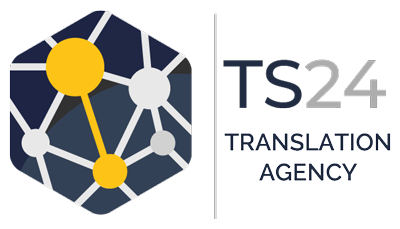Future of translation services
Technology is changing practically all aspects of the world at a phenomenal rate. And the translation industry is no exception. Up to now, digital technologies have gifted linguists unprecedented freedoms and language translation is featured in the best top ten careers.
But what does the future hold for the language translation industry? Technology may have helped language translation services raise their game – but machines could ultimately spell the end for linguists.
A ‘think tank’ met in Amsterdam recently to discuss how the translation industry might look in five years’ time. The most crucial talking point was the on-going battle of man vs machine. And it seems the latter could win the war.
In 2022, translation companies will probably look very different. Game changing technologies are in the process of creating a paradigm shift. Online translation tools may be woefully ineffective now, but with the rapid advancements of artificial intelligence, it’s only a matter of time before machine learning cracks the code of language translation.
The rise of automated translation machines
Google translate was a huge wake-up call for the translation industry. The online tool may only be useful for friends and family to communicate in different languages, but the search engines translation tool is invaluable to millions of people.
This early success for automated translation tools soon waned when businesses realised the awkward translations spell out gibberish in another language. Marketers targeting customers in a foreign language rely heavily on the accuracy of human translators.
But how much longer will this be the case? In recent years, artificial intelligence (AI) has enabled machines to learn quicker and take a myriad of decisions to arrive at better results. Even Google translate is becoming more accurate.
Robots have already impacted on the necessity for human activity in many sectors of industry. The automobile trade replaced workers with machines and has gone from strength to strength. So can the translation industry also benefit from digital technology?
Robots have the capacity to improve productivity, identify new terminology, optimise and leverage memory, profile content, sample reviews, evaluate quality and check for spelling and grammar errors. Experts believe it won’t be long before computers will be able to check for quality as well.
In 2016, Google launched a neural machine translation tool that uses an artificial neural network that can undertake multilingual translations by decoding semantic text. Experts believe this could be the nail in the coffin for linguists.
Moreover, deep learning data technology is becoming extremely versatile at a rapid pace. Technology companies are tapping into existing resources and developing machines with the capacity to translate monolingual and bi-lingual text, audio files and even lip read people speaking in a video.
Neural MT promises to transform the emergence of speech-to-speech software. This will be a major boon for translation technology, particularly when data clouds provide AI with enough fuel to deliver results that are natural and fluent.
New language technologies
Language technologies are transforming a number of industries; not just the translation industry; Farmers in Vietnam can use computerized language translators to communicate with manufacturers in Germany whenever their tractors break down. Logistics officers working in Russia can communicate with manufacturers in China to track shipping.
Within the next five years, travellers will benefit exponentially from digital multi-lingual translation technologies. A relatively unknown Japanese electronics company, Longbar, has developed a wearable device that translates English into Japanese and Chinese. More devices and languages will follow.
Other Japanese companies are also leading the way in translation services for the general public. Last year, Panasonic announced the introduction of a megaphone-shaped auto-translation device called the ‘Megahonyaku’ which can automatically make announcements in multiple language in public spaces such as airports, public transport stations, museums, stadiums and event halls.
Google and Microsoft are also very active in the progression of new translation technologies. Microsoft has added a translator to Skype and Google’s Gboard app could have enduring benefits for international businesses to communicate with partners in foreign countries.
So with all these emerging technologies crossing global boundaries and transforming cross-cultural businesses, where does this leave linguists and language translation service providers?
Specialist roles for linguists
Before we get too carried away and blinded by the evolution of translation technology, machines cannot destroy an entire industry – regardless of what happens in movies.
The advantage humans have over machines is creativity. Machines can only predict outcomes based on the information they have. Technology may be evolving, but so is human nature. Unique environments emerge and computers cannot adapt to these changes until they have the data to learn from.
Linguists survive by specialising in a highly-skilled area. This is true today and will be even more of a requisite for linguists in the future. The industry that will arguably offer the most opportunities to language translators is marketing.
We already see a split in translation tech and creative networks. Linguists are providing accurate data for businesses to store in translation memory systems that can be reused across multiple platforms.
Let’s face it, without the input of linguists, automatic translation machines would be a non-starter. But now the snowball is headed downhill, it is not going to stop. As global markets become more expansive, the demand for multilingual data will also expand.
The role for linguists will therefore change. Modern marketers are not just advertisers and sales staff. They are writers, journalists and promoters with an imagination to tell a story. And no matter how good machines become at translating languages, they will not have the creative output to produce information in a unique and enticing way.
Language translation and marketing
Marketers are required to drive engagement. Talented writers speak to the audience in a natural language they understand. And as more businesses look to expand into foreign markets, consumer demand for brands to publish content in the native language becomes increasingly prevalent.
This is where existing translation machines fall short in dramatic fashion. AI intelligence promises to remedy that, but marketing messages have to trigger emotional responses. Machines do not have the capacity to engage the imagination of end-users.
Furthermore, stories within marketing materials need to be recreated. High-quality content increases online visibility and conversion rate. Spinning content may be cost-effective to produce, but is always destined for failure – which ultimately proves costly in the long-run.
Translation machines may threaten the future careers of linguists as many operate today. But there will always be a role for creatives that can speak a second language in marketing teams.
Qualified translators can therefore expect to find plum jobs in the marketing departments of Fortune 500 companies and other international organisations that reach out to an overseas audience.
A typical marketer can write copy in their native language and run it through a translation machine. But no matter how advanced translations machines become, the little idioms that are ubiquitous in every language will be overlooked.
Marketers without second language skills will be oblivious to subtle errors. As a result, marketing campaigns will fail on a dramatic scale. Employees that can fluently speak a second language therefore become essential assets for international companies.
The human touch
In the current climate, the lines are blurred in the fight between man and machine. AI is sugar-coated with a generous sprinkling of promise, but translation technology has a long way to go before machines can replace humans within the community of language translation services.
The next five years is a critical time for the language translation industry. There will inevitably be less need for human interaction, but there will still be a requirement to find a balance between man and machine.
Translation technologies will speed up translation times and increase productivity. Business processes, workflows and staffing requirement will all be impacted. But there will still be a necessity for a human touch when it comes to reviewing translations and amending errors.
Humans are crucial to the success of businesses because we have the ability and the capacity to adapt to new behaviours and identify emerging markets. Machines can only help once the ball is already in motion.
It is inevitable that the translation industry will be less congested in the future as more international businesses employ in-house linguists. But not every company venturing into foreign markets can afford to take on marketing specialists with a second language. Therefore, outsourcing translation work is the most cost-effective and viable solution.
The new generation of Neural Machine Translators offers exciting prospects for language translation companies. The ability to improve services and generate a faster turnaround will no doubt please clients. Language firms will also have the means to cut overheads and enjoy bigger profit margins. And a career in linguists is not completely lost either.



